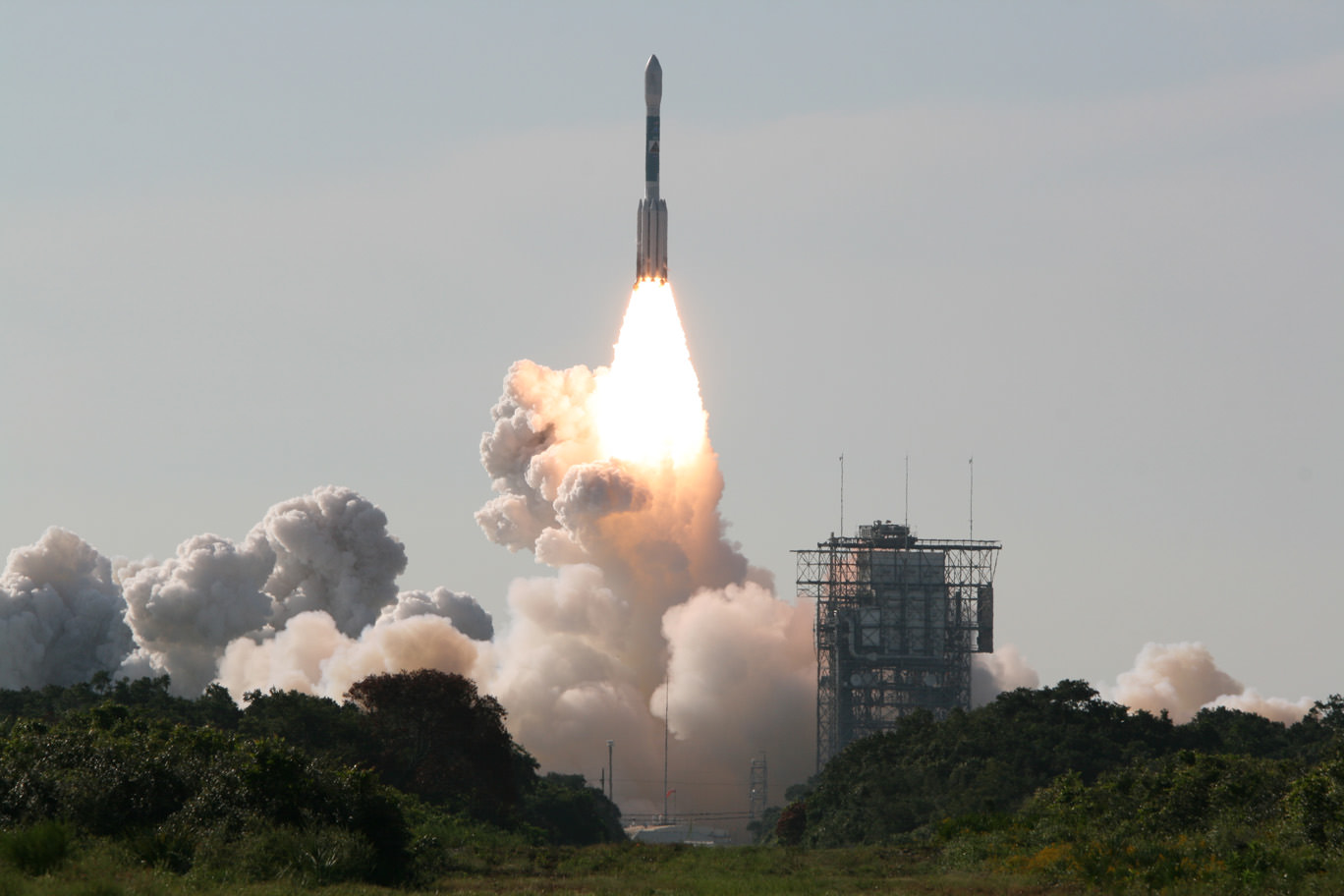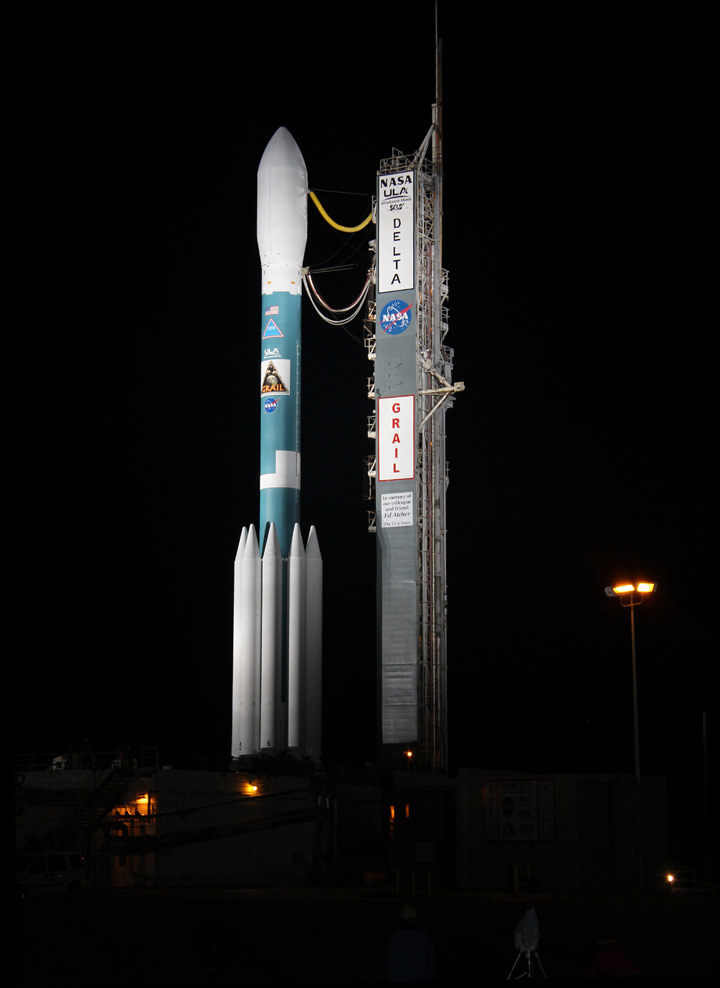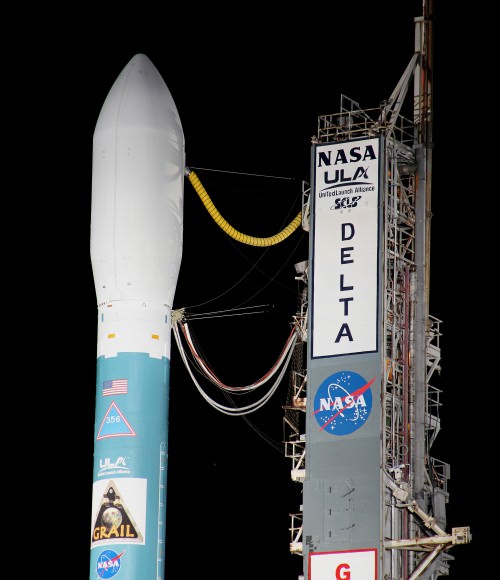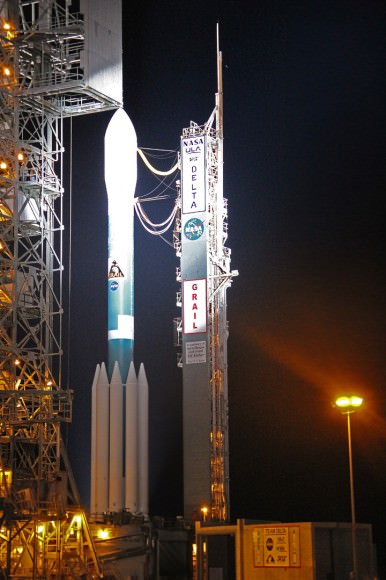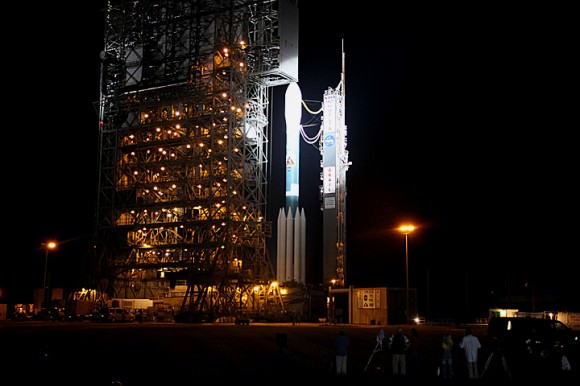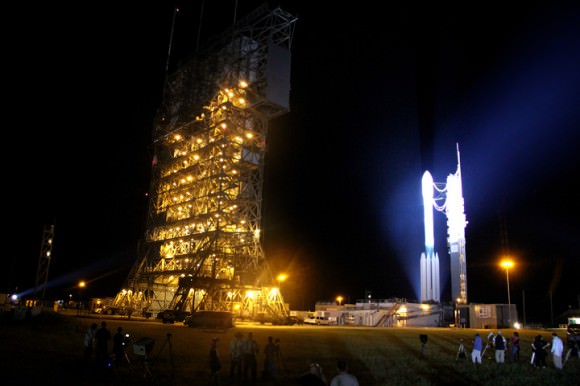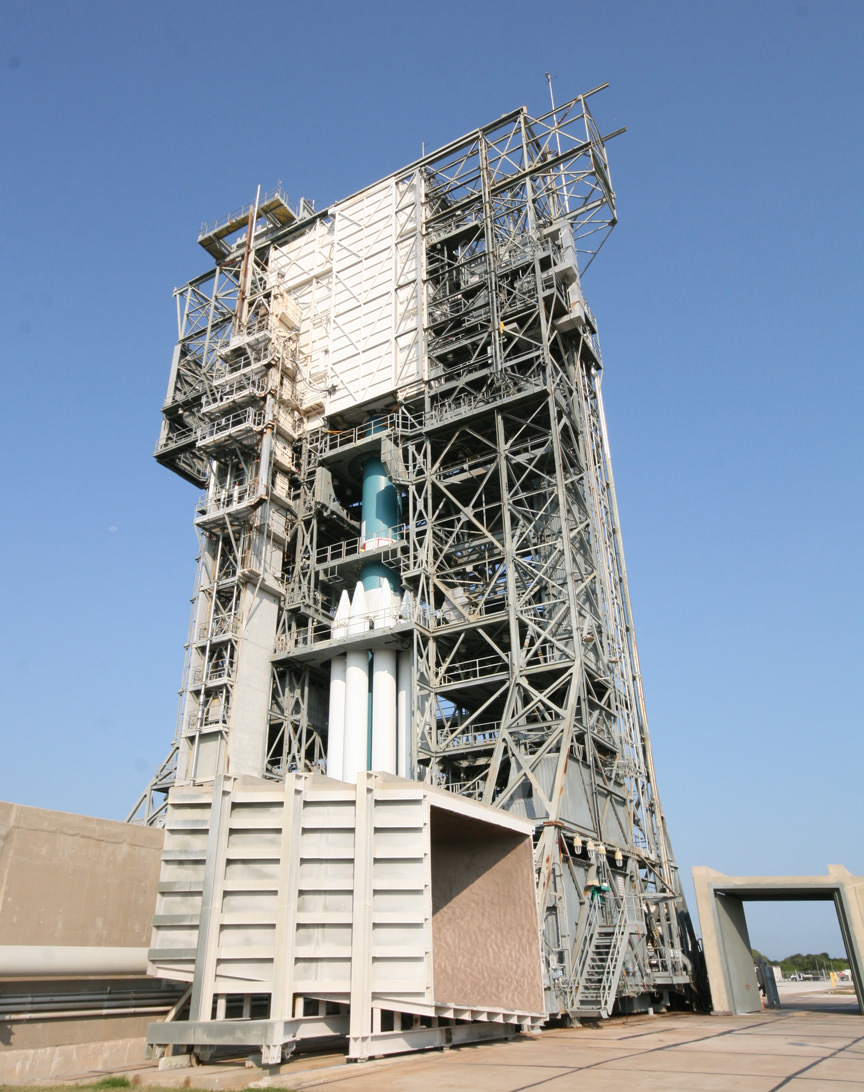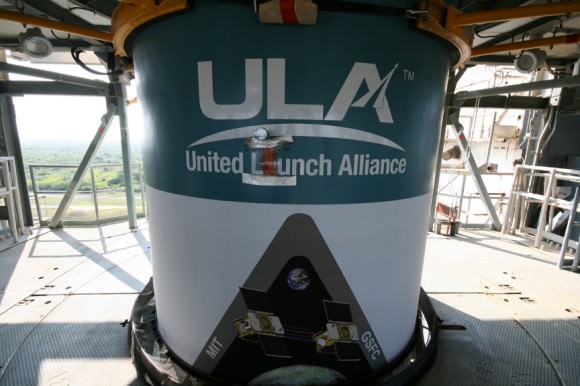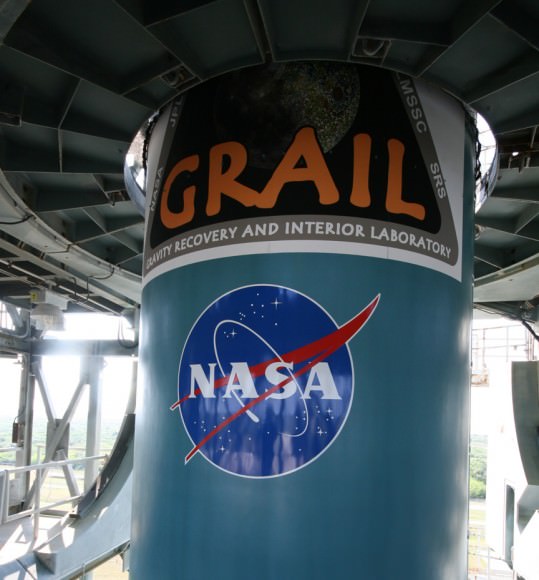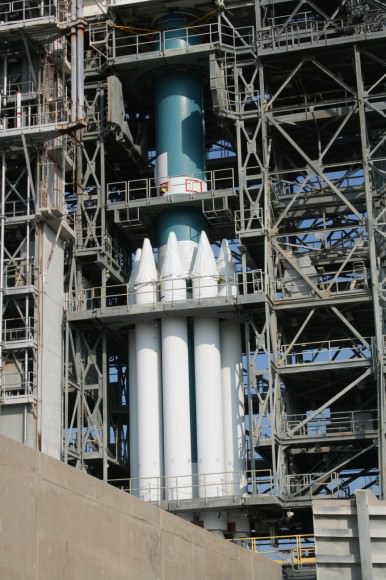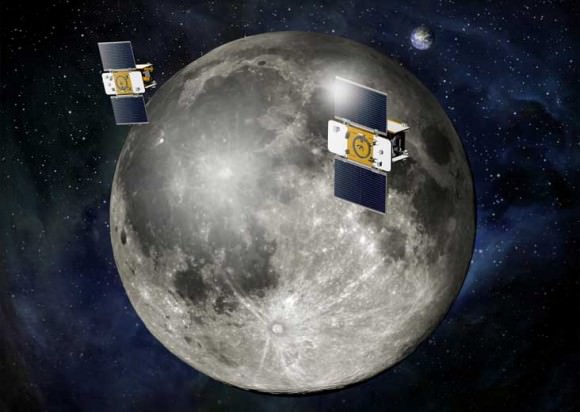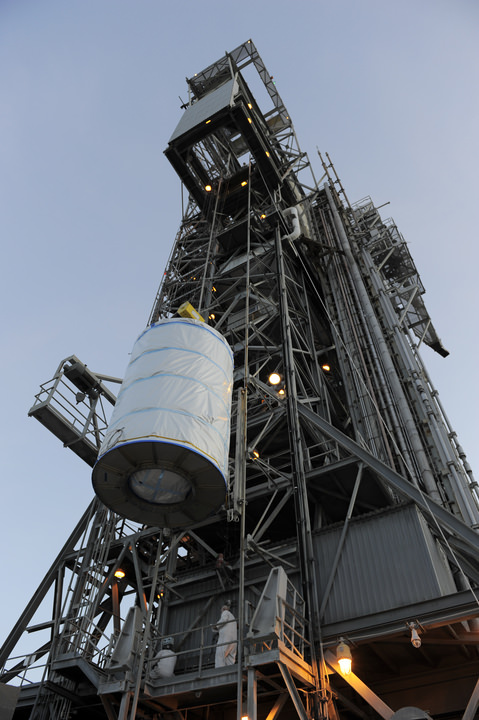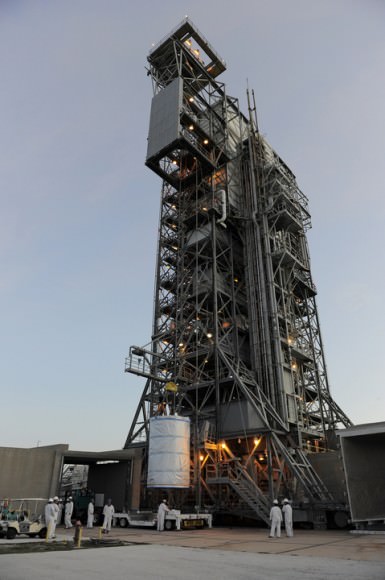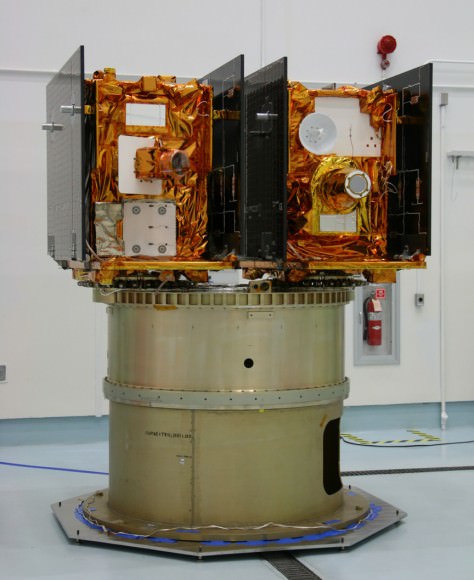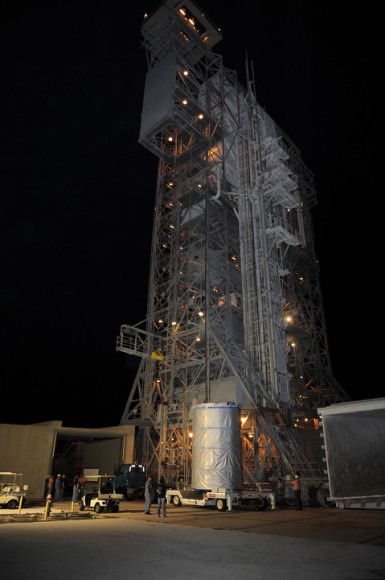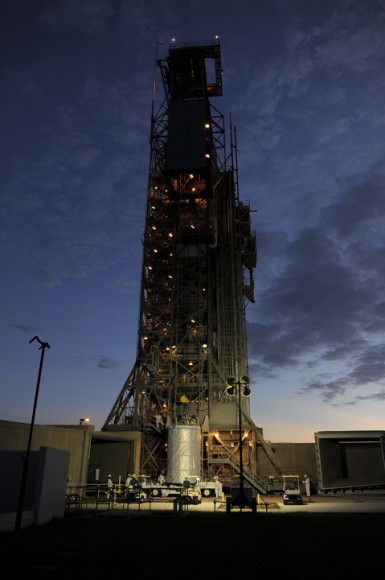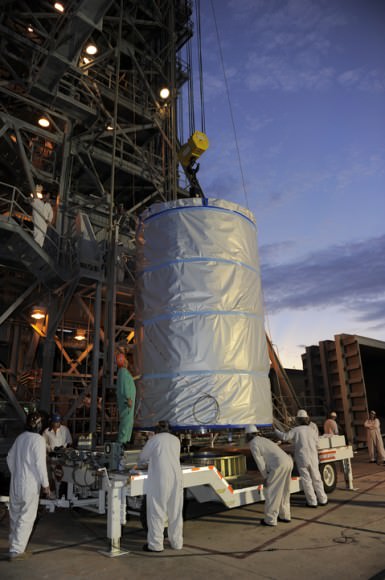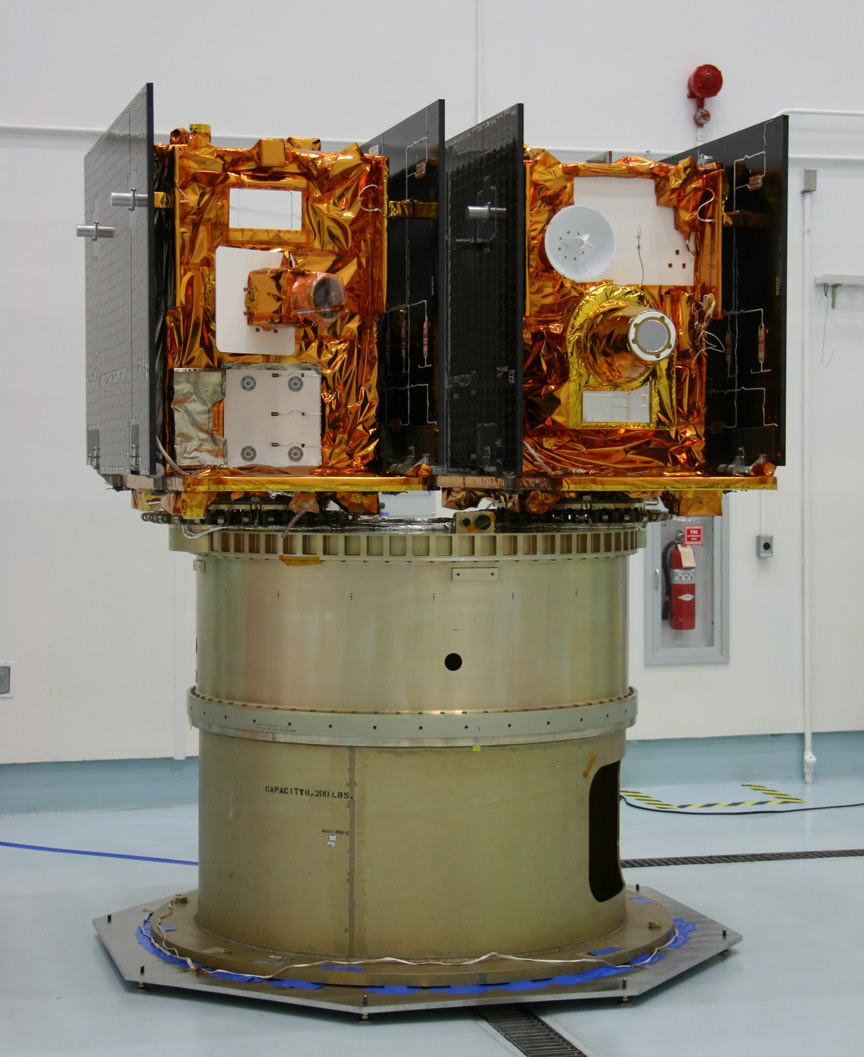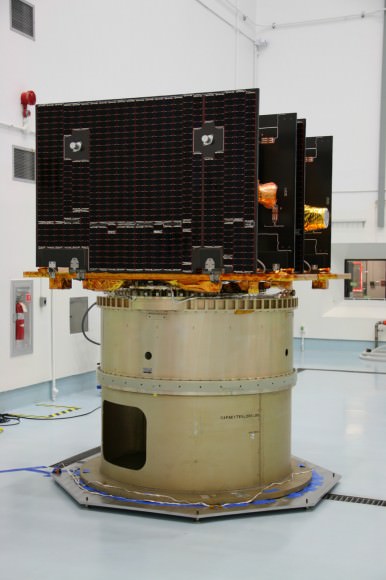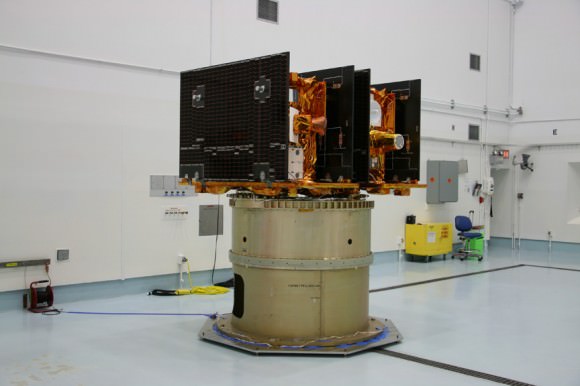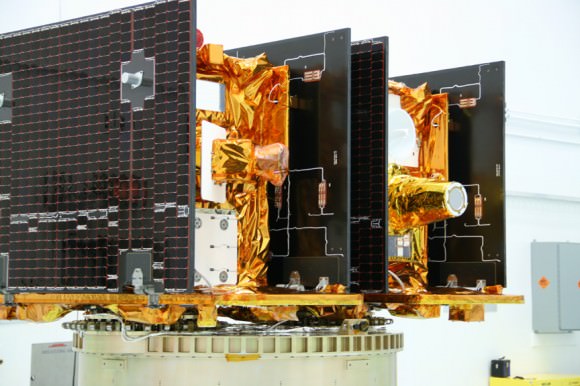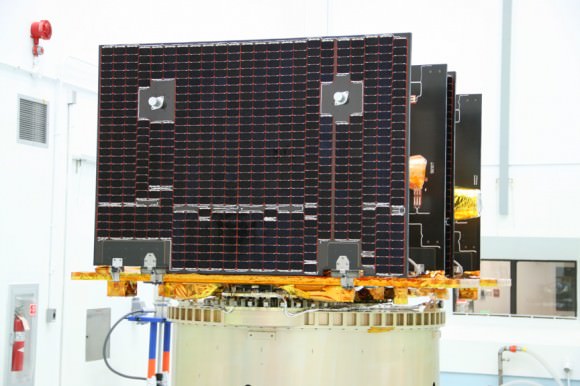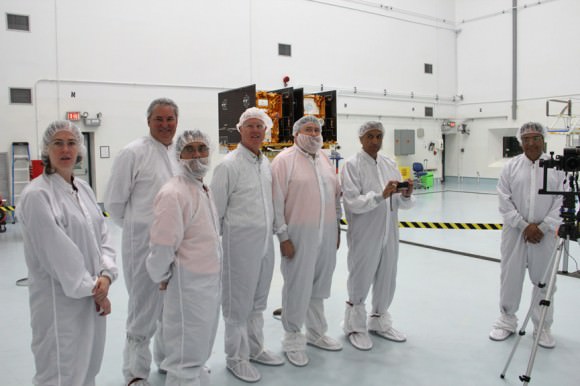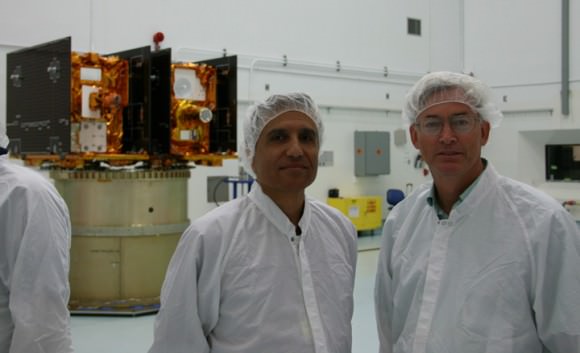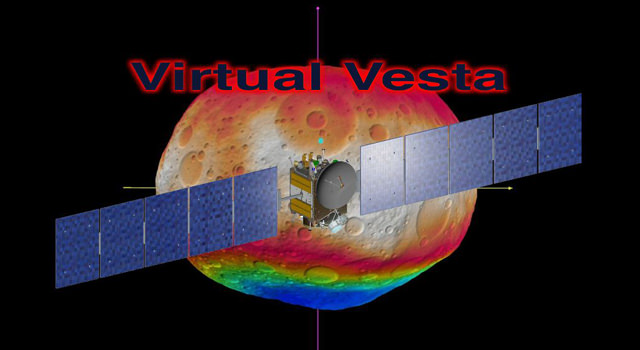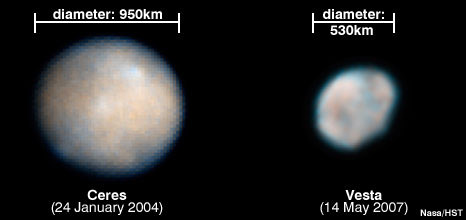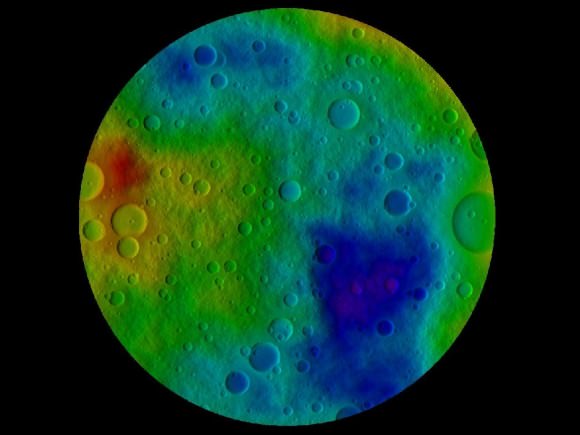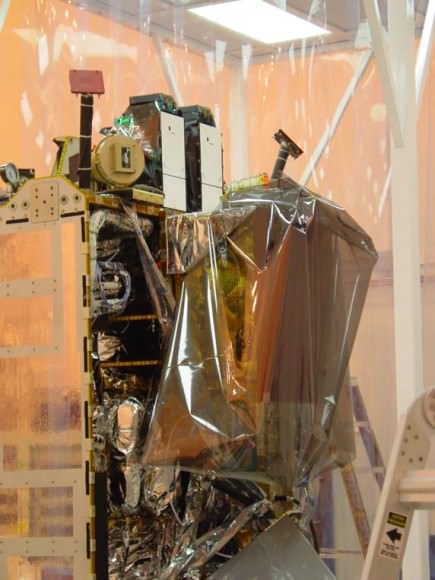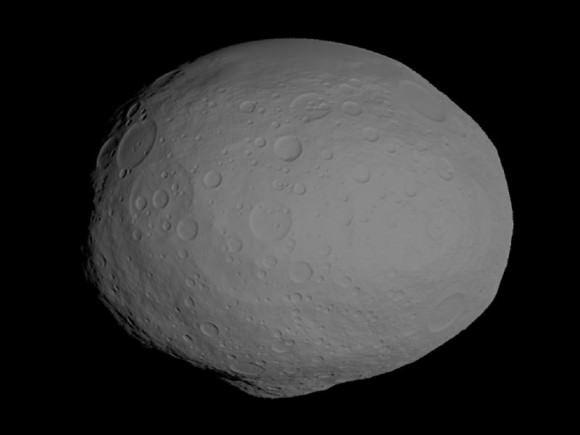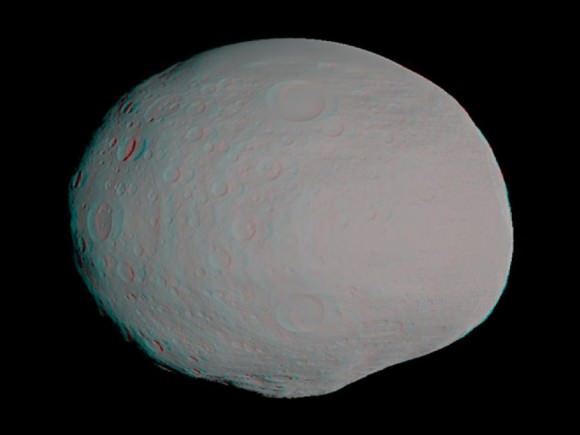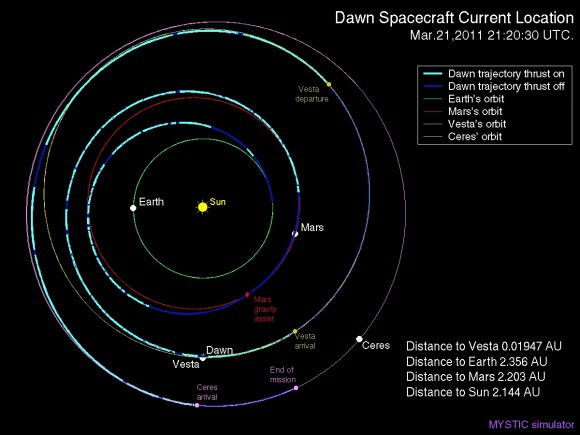[/caption]
NASA renewed its focus on ground breaking science today with the thunderous blastoff of a pair of lunar bound spacecraft that will map the moons interior with unparalled precision and which will fundamentally alter our understanding of how the moon and other rocky bodies in our solar system – including Earth – formed and evolved over 4.5 Billion years.
Today’s (Sept. 10) launch of the twin lunar Gravity Recovery and Interior Laboratory (GRAIL) spacecraft atop the mightiest Delta II rocket from Cape Canaveral Air Force Station in Florida at 9:08 a.m. EDT was a nail biter to the end, coming after a two day weather delay due to excessively high upper level winds that scrubbed the first launch attempt on Sept. 8, and nearly forced a repeat cancellation this morning.
Liftoff of the nearly identical GRAIL A and B lunar gravity mappers from Space Launch Complex 17B took place on the second of two possible launch attempts after the first attempt was again waived off because the winds again violated the launch constraints.
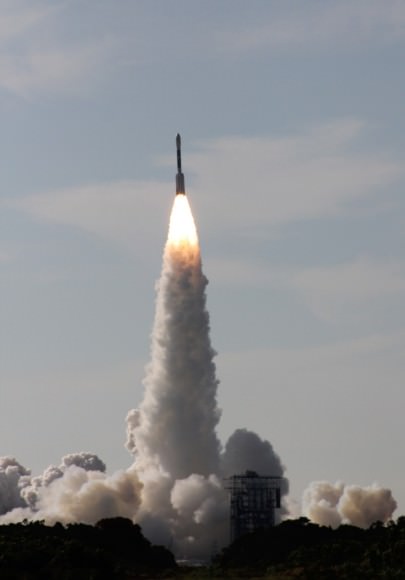
Credit: Ken Kremer (kenkremer.com)
After the final “GO” was given, the Delta II Heavy booster suddenly roared to life and put on a spectacular show spewing smoke, flames and ash as it pushed off the pad and shot skywards atop a rapidly growing plume of exhaust and rumbling thunder into a nearly cloudless sky.
The solar powered dynamic duo were propelled to space by the last ever Delta II rocket slated to depart Earth from Cape Canaveral, Florida. After more than 50 years of highly reliable service starting in 1960, the venerable Delta II family will be retired after one final launch in October from Vandenberg Air Force Base in California.
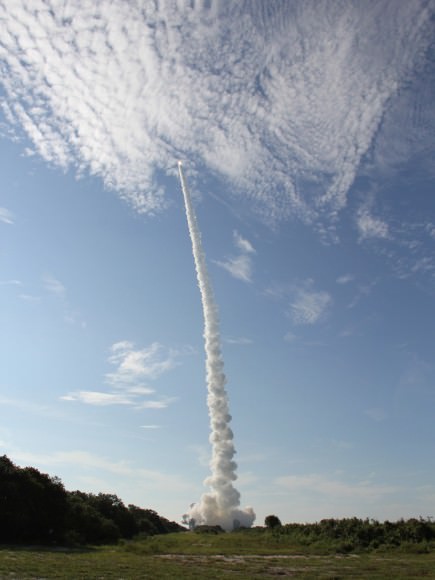
View to Space Launch Complex 17 Pad A & Pad B (right) from Press Site 1. Credit: Ken Kremer
On this special occasion the media were allowed to a witness the launch from Press Site 1 – a location just 1.5 miles away from the pad with a gorgeous and unobstructed view to the base of the pad which magnified the tremendous roar of the rocket engines.
“Since the earliest humans looked skyward, they have been fascinated by the moon,” said GRAIL principal investigator Maria Zuber from the Massachusetts Institute of Technology in Cambridge. “GRAIL will take lunar exploration to a new level, providing an unprecedented characterization of the moon’s interior that will advance understanding of how the moon formed and evolved.”
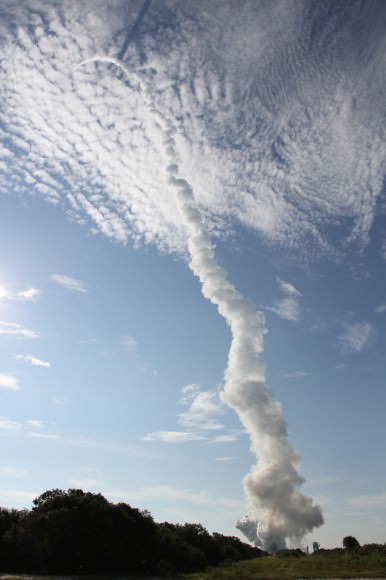
The spacecraft separation and deployment of the solar arrays worked exactly as planned, the mission team reported at a post launch briefing for reporters. Both probes are power positive and healthy.
GRAIL A and B are now speeding towards the moon on a low energy path that will take about 3.5 months compared to just three days for the Apollo astronauts. The slower and longer path covering more than 2.5 million miles (4 million kilometers) enables the spacecraft to use a smaller engine and carry less fuel for the braking maneuver required to place the probes into a polar elliptical orbit when they arrive at the moon about 25 hours apart on New Year’s Eve and New Year’s Day 2012.
“Our GRAIL twins have Earth in their rearview mirrors and the moon in their sights,” said David Lehman, GRAIL project manager at NASA’s Jet Propulsion Laboratory (JPL) in Pasadena, Calif. “The mission team is ready to test, analyze and fine-tune our spacecraft over the next three-and-a-half months on our journey to lunar orbit.”
During the 82 day science phase, the primary objective of is to study the moons interior from crust to core and map its gravity field by 100 to 1000 times better than ever before. GRAIL A and GRAIL B will fly in tandem formation in near circular polar orbit at an altitude of some 50 km above the lunar surface as the moon rotates beneath three times.
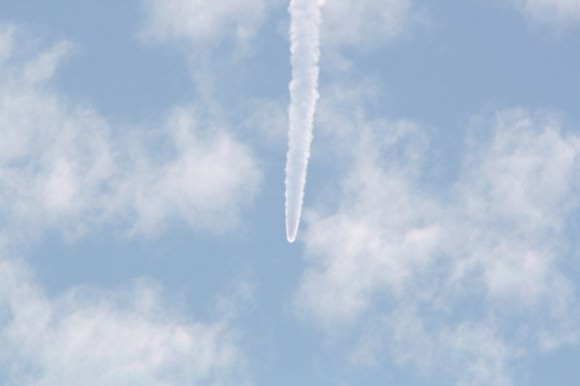
All 3 Air-lit solids have ignited after all 6 ground lit solids have been jettisoned.Credit: Ken Kremer
The mission will provide unprecedented insight into the structure and composition of moon from crust to core, unlock the mysteries of the lunar interior and advance our understanding of the thermal evolution of the moon that can be applied to the other terrestrial planets in our solar system, including Mercury, Venus, Earth and Mars.
Read Ken’s continuing features about GRAIL
GRAIL Unveiled for Lunar Science Trek — Launch Reset to Sept. 10
Last Delta II Rocket to Launch Extraordinary Journey to the Center of the Moon on Sept. 8
NASAs Lunar Mapping Duo Encapsulated and Ready for Sept. 8 Liftoff
GRAIL Lunar Twins Mated to Delta Rocket at Launch Pad
GRAIL Twins ready for NASA Science Expedition to the Moon: Photo Gallery

